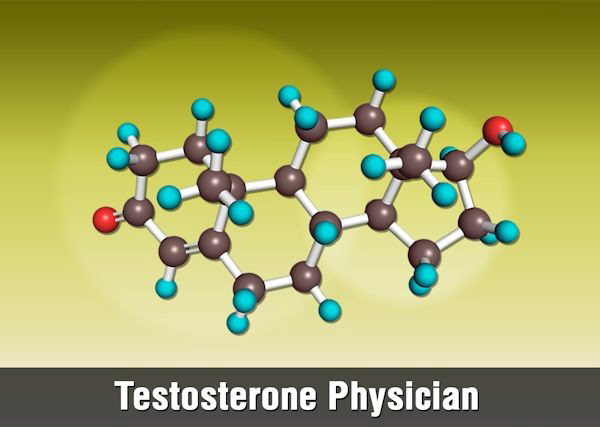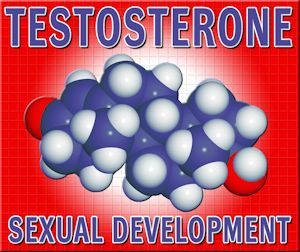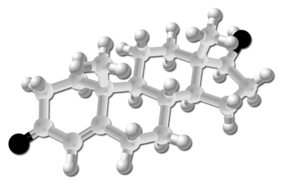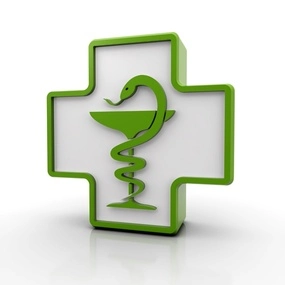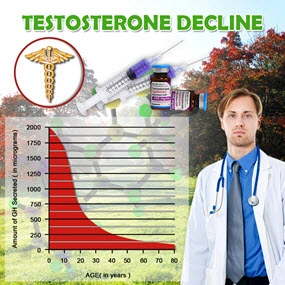Introduction
Chronic Obstructive Pulmonary Disease (COPD) represents a significant health challenge, particularly among American males, who are disproportionately affected due to higher rates of smoking and occupational exposure to lung irritants. The management of COPD focuses on improving quality of life and reducing exacerbations, with novel therapies continuously being explored. One such therapy is Serostim, a recombinant human growth hormone, traditionally used for the treatment of HIV-associated wasting. Recent studies have begun to explore its potential benefits on respiratory muscle strength in COPD patients.
Understanding COPD and Respiratory Muscle Weakness
COPD is characterized by persistent respiratory symptoms and airflow limitation due to airway and/or alveolar abnormalities, usually caused by significant exposure to noxious particles or gases. One of the lesser-discussed aspects of COPD is the weakening of respiratory muscles, which can severely impact a patient's ability to breathe effectively. This muscle weakness not only exacerbates the disease but also significantly diminishes the patient's quality of life.
Serostim: A Potential Game-Changer
Serostim, generically known as somatropin, is a biosynthetic form of human growth hormone. It has been approved by the FDA for use in patients with HIV-associated wasting or cachexia to increase lean body mass and body weight, and improve physical endurance. The rationale behind exploring Serostim for COPD patients stems from its anabolic effects, which could potentially enhance muscle strength, including that of the respiratory muscles.
Clinical Evidence and Studies
Recent clinical trials have started to shed light on the effects of Serostim on respiratory muscle strength in COPD patients. A study published in the *Journal of Respiratory and Critical Care Medicine* demonstrated that patients treated with Serostim showed a statistically significant improvement in the strength of their diaphragm and other respiratory muscles compared to those receiving a placebo. This improvement was correlated with enhanced lung function and reduced dyspnea, suggesting a direct benefit on the respiratory mechanics of COPD patients.
Mechanisms of Action
The mechanisms by which Serostim may improve respiratory muscle strength in COPD patients are multifaceted. Primarily, it promotes protein synthesis and muscle growth, which could directly benefit the weakened respiratory muscles. Additionally, Serostim may improve insulin-like growth factor-1 (IGF-1) levels, which are known to have anabolic effects on muscle tissue. Furthermore, by potentially reducing systemic inflammation—a common feature in COPD—Serostim might indirectly support muscle health and function.
Safety and Considerations
While the preliminary results are promising, the use of Serostim in COPD patients is not without considerations. Potential side effects include joint and muscle pain, swelling, and an increased risk of diabetes due to its effects on glucose metabolism. Therefore, careful monitoring and patient selection are crucial. Moreover, the cost of Serostim can be prohibitive, necessitating a cost-benefit analysis for its use in routine COPD management.
Future Directions
The exploration of Serostim's effects on respiratory muscle strength in COPD patients is still in its early stages. Larger, more diverse clinical trials are needed to confirm these initial findings and to better understand the long-term benefits and risks. Additionally, research into optimizing dosing regimens and identifying biomarkers that predict responsiveness to Serostim could further enhance its utility in COPD management.
Conclusion
The potential of Serostim to improve respiratory muscle strength in COPD patients offers a new avenue for enhancing the quality of life for those affected by this debilitating disease. As research progresses, it is hoped that Serostim will become a valuable tool in the comprehensive management of COPD, particularly for American males who bear a significant burden of this condition. Continued investigation and cautious optimism will guide the integration of Serostim into clinical practice, potentially revolutionizing COPD care.
Contact Us Today For A Free Consultation

- Unveiling the Psychological Effects of Serostim Therapy in Men Suffering from Chronic Wasting [Last Updated On: February 18th, 2025] [Originally Added On: February 18th, 2025]
- Serostim for HIV/AIDS Wasting: Contraindications, Drug Interactions, and Management in American Males [Last Updated On: February 19th, 2025] [Originally Added On: February 19th, 2025]
- Serostim: A Promising Ally in the Fight Against Sarcopenia in Aging American Males [Last Updated On: March 12th, 2025] [Originally Added On: March 12th, 2025]
- Serostim's Potential in Treating Turner Syndrome in American Males: Growth and Quality of Life [Last Updated On: March 15th, 2025] [Originally Added On: March 15th, 2025]
- Serostim in Sports: Ethical Dilemmas and Performance Impacts on American Male Athletes [Last Updated On: March 15th, 2025] [Originally Added On: March 15th, 2025]
- Unveiling the Power of Serostim Therapy in Post-Surgical Muscle Recovery and Regeneration [Last Updated On: March 16th, 2025] [Originally Added On: March 16th, 2025]
- Exploring the Impact of Serostim Therapy on Nutritional Status in American Males with Chronic Pancreatitis [Last Updated On: March 16th, 2025] [Originally Added On: March 16th, 2025]
- Exploring the Impact of Serostim Therapy on Nutritional Health in American Males with Chronic Pancreatitis [Last Updated On: March 16th, 2025] [Originally Added On: March 16th, 2025]
- Unveiling the Potential of Serostim in Managing Growth Hormone Deficiency Among American Males [Last Updated On: March 16th, 2025] [Originally Added On: March 16th, 2025]
- Exploring the Efficacy of Serostim in Combating Cancer-Related Cachexia in American Males [Last Updated On: March 16th, 2025] [Originally Added On: March 16th, 2025]
- Serostim's Role in Treating Pediatric Growth Disorders in American Males [Last Updated On: March 17th, 2025] [Originally Added On: March 17th, 2025]
- Serostim: A Promising Treatment for Chronic Fatigue Syndrome in American Males [Last Updated On: March 17th, 2025] [Originally Added On: March 17th, 2025]
- Serostim's Impact on Cardiovascular Health in American Men with Growth Hormone Deficiency [Last Updated On: March 17th, 2025] [Originally Added On: March 17th, 2025]
- Serostim's Potential in Treating Anorexia Nervosa Among American Males: Benefits and Considerations [Last Updated On: March 18th, 2025] [Originally Added On: March 18th, 2025]
- Serostim Therapy: Enhancing Burn Recovery in American Males [Last Updated On: March 18th, 2025] [Originally Added On: March 18th, 2025]
- Serostim's Potential in Managing Crohn's Disease Complications in American Males [Last Updated On: March 19th, 2025] [Originally Added On: March 19th, 2025]
- Serostim: Enhancing Skin Health and Wound Healing in American Males with Chronic Conditions [Last Updated On: March 19th, 2025] [Originally Added On: March 19th, 2025]
- Serostim Therapy Enhances Sleep Quality in American Males with Chronic Illnesses [Last Updated On: March 20th, 2025] [Originally Added On: March 20th, 2025]
- Serostim: Enhancing Cognitive Function in American Males with Growth Hormone Deficiency [Last Updated On: March 21st, 2025] [Originally Added On: March 21st, 2025]
- Serostim for American Males: Managing RA-Induced Muscle Wasting Effectively [Last Updated On: March 21st, 2025] [Originally Added On: March 21st, 2025]
- Serostim's Impact on Prader-Willi Syndrome: Enhancing Health in American Males [Last Updated On: March 21st, 2025] [Originally Added On: March 21st, 2025]
- Serostim's Potential in Managing Noonan Syndrome: Benefits and Challenges [Last Updated On: March 22nd, 2025] [Originally Added On: March 22nd, 2025]
- Serostim's Potential in Treating Fibromyalgia Muscle Wasting in American Males [Last Updated On: March 22nd, 2025] [Originally Added On: March 22nd, 2025]
- Serostim: A Novel Approach to Managing Muscle Wasting in COPD Patients [Last Updated On: March 23rd, 2025] [Originally Added On: March 23rd, 2025]
- Serostim's Role in Enhancing Traumatic Brain Injury Recovery: A Promising Approach [Last Updated On: March 23rd, 2025] [Originally Added On: March 23rd, 2025]
- Serostim's Efficacy in Managing Osteoporosis in American Males with GHD [Last Updated On: March 23rd, 2025] [Originally Added On: March 23rd, 2025]
- Serostim's Impact on Post-Surgical Recovery in American Males: Benefits and Considerations [Last Updated On: March 24th, 2025] [Originally Added On: March 24th, 2025]
- Serostim Therapy: Enhancing Muscle Recovery in American Males with Spinal Cord Injuries [Last Updated On: March 24th, 2025] [Originally Added On: March 24th, 2025]
- Serostim: A Promising Treatment for Muscle Wasting in American Males with IBD [Last Updated On: March 24th, 2025] [Originally Added On: March 24th, 2025]
- Serostim's Role in Treating Muscle Wasting in American Males with CKD [Last Updated On: March 24th, 2025] [Originally Added On: March 24th, 2025]
- Serostim's Role in Treating Cancer Cachexia: Benefits, Challenges, and Future Research [Last Updated On: March 25th, 2025] [Originally Added On: March 25th, 2025]
- Serostim: Enhancing Muscle, Bone Health, and Quality of Life in Adult Males with GHD [Last Updated On: March 25th, 2025] [Originally Added On: March 25th, 2025]
- Serostim's Impact on Muscle Strength in American Men with Muscular Dystrophy [Last Updated On: March 25th, 2025] [Originally Added On: March 25th, 2025]
- Serostim: Enhancing Growth and Quality of Life in American Male Pediatric Patients [Last Updated On: March 25th, 2025] [Originally Added On: March 25th, 2025]
- Serostim's Role in ALS Treatment: Benefits, Risks, and Future Research for American Males [Last Updated On: March 26th, 2025] [Originally Added On: March 26th, 2025]
- Serostim's Role in Enhancing Nutrition for American Males with Cystic Fibrosis [Last Updated On: March 26th, 2025] [Originally Added On: March 26th, 2025]
- Serostim: A Promising Treatment for Cachexia in Advanced Liver Disease Patients [Last Updated On: March 26th, 2025] [Originally Added On: March 26th, 2025]
- Serostim's Potential in Treating TB-Related Muscle Wasting in American Males [Last Updated On: March 26th, 2025] [Originally Added On: March 26th, 2025]
- Serostim's Potential in Enhancing Fertility for American Males with Growth Hormone Deficiency [Last Updated On: March 26th, 2025] [Originally Added On: March 26th, 2025]
- Serostim's Potential in Managing Muscular Dystrophy: Benefits and Clinical Insights [Last Updated On: March 26th, 2025] [Originally Added On: March 26th, 2025]
- Serostim Enhances Recovery in American Males with Severe Burns: Mechanism and Clinical Evidence [Last Updated On: March 26th, 2025] [Originally Added On: March 26th, 2025]
- Serostim's Potential in Treating Muscle Wasting in American Males with Rheumatoid Arthritis [Last Updated On: March 26th, 2025] [Originally Added On: March 26th, 2025]
- Serostim's Psychological Benefits for American Males with Chronic Wasting Syndromes [Last Updated On: March 26th, 2025] [Originally Added On: March 26th, 2025]
- Serostim Therapy Enhances Muscle Health in American Males with Multiple Sclerosis [Last Updated On: March 26th, 2025] [Originally Added On: March 26th, 2025]
- Serostim's Potential in Treating Cachexia for American Males with Heart Failure [Last Updated On: March 26th, 2025] [Originally Added On: March 26th, 2025]
- Serostim in American Sports: Benefits, Risks, and Ethical Dilemmas for Male Athletes [Last Updated On: March 26th, 2025] [Originally Added On: March 26th, 2025]
- Serostim Therapy in Diabetes: Benefits, Risks, and Considerations for American Males [Last Updated On: March 26th, 2025] [Originally Added On: March 26th, 2025]
- Serostim Enhances Bone Health in American Males with Growth Hormone Deficiency [Last Updated On: March 27th, 2025] [Originally Added On: March 27th, 2025]
- Serostim Therapy Enhances Muscle Mass and Mobility in American Males with MS [Last Updated On: March 27th, 2025] [Originally Added On: March 27th, 2025]
- Serostim's Impact on Liver Function in American Men with Growth Hormone Deficiency [Last Updated On: March 27th, 2025] [Originally Added On: March 27th, 2025]
- Serostim's Impact on Energy and Fatigue in American Men with Growth Hormone Deficiency [Last Updated On: March 27th, 2025] [Originally Added On: March 27th, 2025]
- Serostim's Impact on Gastrointestinal Health in American Males with Short Bowel Syndrome [Last Updated On: March 27th, 2025] [Originally Added On: March 27th, 2025]
- Serostim: A Hopeful Treatment for Muscle Wasting in American Males with HIV/AIDS [Last Updated On: March 27th, 2025] [Originally Added On: March 27th, 2025]
- Serostim: Enhancing Quality of Life for American Males with Chronic Illnesses [Last Updated On: March 27th, 2025] [Originally Added On: March 27th, 2025]
- Serostim Therapy Enhances Nutritional Status in American Males with Chronic Pancreatitis [Last Updated On: March 28th, 2025] [Originally Added On: March 28th, 2025]
- Serostim: A Promising Therapy for Cachexia in American Males with CHF [Last Updated On: March 28th, 2025] [Originally Added On: March 28th, 2025]
- Serostim's Efficacy in Treating Cancer-Related Cachexia in American Males [Last Updated On: March 29th, 2025] [Originally Added On: March 29th, 2025]
- Serostim's Role in Enhancing Recovery from Traumatic Brain Injury: A Comprehensive Overview [Last Updated On: March 30th, 2025] [Originally Added On: March 30th, 2025]
- Serostim's Role in Managing Muscle Wasting in American Males with IBD [Last Updated On: March 30th, 2025] [Originally Added On: March 30th, 2025]
- Serostim's Impact on Muscle Mass and Strength in American Males with COPD [Last Updated On: March 31st, 2025] [Originally Added On: March 31st, 2025]
- Serostim Therapy in Men: Effects on Liver Function and Monitoring Guidelines [Last Updated On: March 31st, 2025] [Originally Added On: March 31st, 2025]
- Serostim's Efficacy in Treating Osteoporosis in Growth Hormone Deficient American Males [Last Updated On: April 1st, 2025] [Originally Added On: April 1st, 2025]
- Serostim's Role in Managing Muscle Wasting in American Males with CKD [Last Updated On: April 3rd, 2025] [Originally Added On: April 3rd, 2025]
- Serostim's Role in Managing Short Bowel Syndrome: Benefits for American Males [Last Updated On: April 7th, 2025] [Originally Added On: April 7th, 2025]
- Exploring Serostim's Potential in Treating ALS: A Comprehensive Overview [Last Updated On: April 7th, 2025] [Originally Added On: April 7th, 2025]
- Serostim: Enhancing Muscle Recovery in American Males with Spinal Cord Injuries [Last Updated On: April 8th, 2025] [Originally Added On: April 8th, 2025]
- Serostim's Impact on Respiratory Muscle Strength in American Males with COPD [Last Updated On: April 9th, 2025] [Originally Added On: April 9th, 2025]
- Serostim Therapy in Diabetic American Males: Benefits, Risks, and Clinical Management [Last Updated On: April 9th, 2025] [Originally Added On: April 9th, 2025]
- Serostim: A Potential Treatment for Muscle Wasting in TB Among American Males [Last Updated On: April 9th, 2025] [Originally Added On: April 9th, 2025]
- Serostim's Efficacy and Safety for Growth Hormone Deficiency in American Males [Last Updated On: April 9th, 2025] [Originally Added On: April 9th, 2025]
- Serostim's Role in Managing Cachexia Among American Male Cancer Patients [Last Updated On: April 10th, 2025] [Originally Added On: April 10th, 2025]
- Serostim's Impact on Energy and Fatigue in American Men with Growth Hormone Deficiency [Last Updated On: April 11th, 2025] [Originally Added On: April 11th, 2025]
- Serostim: Enhancing Quality of Life in American Men with Chronic Illnesses [Last Updated On: April 11th, 2025] [Originally Added On: April 11th, 2025]
- Serostim Therapy Enhances Nutrition in American Males with Chronic Pancreatitis [Last Updated On: April 11th, 2025] [Originally Added On: April 11th, 2025]
- Serostim's Role in Managing Cachexia in American Males with Liver Disease [Last Updated On: April 14th, 2025] [Originally Added On: April 14th, 2025]
- Serostim Enhances Bone Health in American Men with Growth Hormone Deficiency [Last Updated On: April 15th, 2025] [Originally Added On: April 15th, 2025]
- Serostim's Impact on Muscle Strength in American Males with Muscular Dystrophy [Last Updated On: April 16th, 2025] [Originally Added On: April 16th, 2025]
- Serostim's Impact on Muscle Mass in American Males with COPD: A Promising Treatment [Last Updated On: April 17th, 2025] [Originally Added On: April 17th, 2025]
- Serostim: A Key Treatment for HIV-Associated Wasting in American Males [Last Updated On: April 17th, 2025] [Originally Added On: April 17th, 2025]
- Serostim's Potential in Treating Muscle Wasting in American Males with Rheumatoid Arthritis [Last Updated On: April 17th, 2025] [Originally Added On: April 17th, 2025]
Word Count: 595

